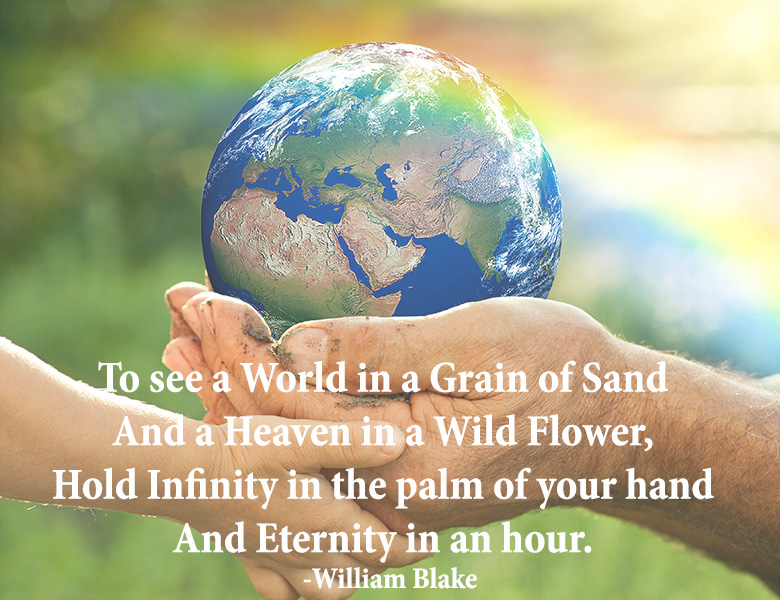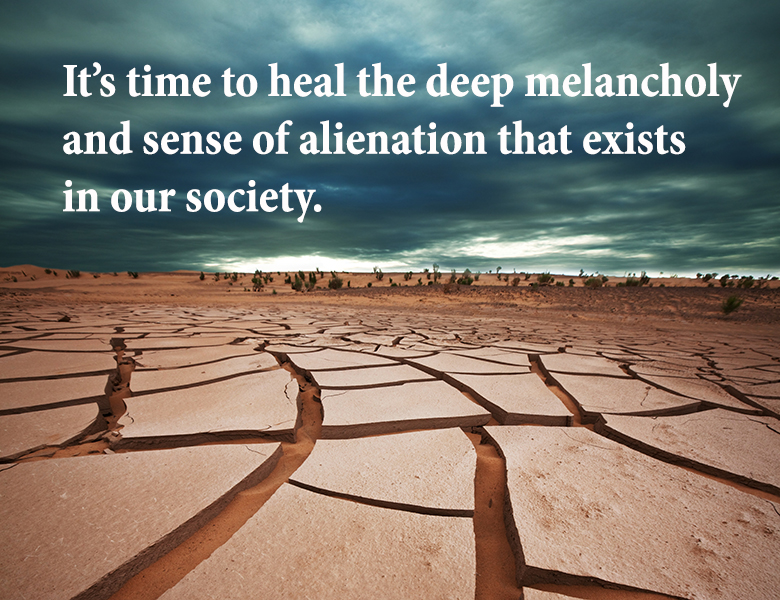Stepping Into the New Year, part two
Transformation versus Transaction
In the first part of this New Year series of articles, we looked at the importance of letting go, and the creative power that is unleashed as a result. In fact, there is no true capacity to move forward until we let go of our attachment to what was and to where we are standing in the moment.

Blake’s short poem on expanded awareness is predicated on opening what he labeled the “doors of perception” in order to see more possibilities. This requires letting go of the old definitions, of an identity that no longer fits, and of well-worn and threadbare ways of thinking and perceiving.
We stand with a foot in two very different worlds.
One is the familiar everyday world of transactions; of give and take; of contracts, rules and laws. This is also the realm of time lines and getting things done, of having and of doing. It is, of course, literally true that nothing happens until it moves into the transactional space, for this is where ideas, concepts, feelings and awareness get traction through discrete, concrete actions.
The power of this transactional realm is that “success” is measurable and quantifiable: for instance, by the amount of money and status we have, the list of things we have accomplished, or the skills we have acquired. The danger of this world, however, is that it is very compelling, even hypnotic in its ability to pull our attention and lock us into narrowed thinking.
For those who spend a lot of time in the world of transaction, two bumper stickers come to mind: “He who dies with the most toys wins,” and “Shit happens.”
The other realm is that of transformation.
This is the domain of wholeness, of being, purpose, significance, love and deep meaning, of spirit and possibility. It reflects a way of moving with life that uses, in the words of the poet Blake, “divine imagination.” From this perspective, we relate and connect in a way that generates a sense of self-worth, dignity and appreciation.

The bumper sticker here might read, “Shift Happens.” After all, he who dies with the most toys still dies.
But if a person can compost the shit to shift, rich new growth is possible.
From the perspective of transformation, the better questions are: Do peace and joy abide with you now? And what is the legacy that will be left for the benefit of future generations?
At this point in time there is a critical need for more transformational leadership by those with the capacity to make “shift happen.” With all of the many challenges we face in our transactional world, we need a wiser perspective and way of moving past the modern, soul-deadening, fear-based approach to life. Media coverage gives us ample stories of what to expect when the ego mind and the transactional rules without benefit of heart.
What is needed now more than ever is courage.
There are many different Acts of Courage we can muster. Let us hold leaders in government and business accountable and expect them to have the Courage to be Confronted and to make it safe for others to tell truth to power. Let us support those who show the Courage to Confront, and help them to move beyond years of living in pain and shame, diminishment and invisibility.
Let us celebrate the Courage to Learn and Grow, and also the Courage to Let Go, so that positive change initiatives can take root and deliver fully. And let us harness the Courage to be Vulnerable and open ourselves to move toward our highest dreams, roller-coaster emotional ride that it may sometimes seem.

As we look toward a fresh tomorrow, let us remember that transformational thinking helps to ensure that powerful, effective growth and development is taking place through a more heart-centered engagement with self and others. This is enlivening and enriching for all.
Holding onto what was but no longer fits is very much like the proverb of watering last year’s garden.
It will keep you from taking care of the seeds for this year’s crop, of recognizing the wonderful new opportunities in front of you. Where does the courage to let go and to dream anew, to be vulnerable, to learn and grow, to confront and be confronted, come from? There are many sources. The main ones I have identified are:
- Service – to something greater than the fear of the moment
- Personal Purpose – a deeper sense of meaning than “ego” or personality
- Anger – at injustice; taking action in spite of fear and social condemnation
- Inspiration – seeing others who are showing courage in the face of needed change
- Camaraderie – and an unwillingness to let others down
- Love – the greatest motivator of all
Where others are seeing limitation and dead end signs, transformational leaders identify growth opportunities and new pathways forward. This is making “shift happen.” Every effective leader that I have studied or that I have worked with has been effective at doing this.
So how about you?
Are you stepping up to what is possible by cultivating the courage to let go of the old identity or ways of thinking that no longer serve you?
Are you a transformational presence or leader for your self, family, team, department or organization?
Are you effective both personally and professionally through your ability and willingness to shift your perspective – and way of thinking, working, engaging and behaving – as called for in the moment? (Where you lack this ability, there is a great danger of becoming stuck in a well-worn, even a velvet-lined “rut.” As my old boss and mentor Dr. James Noble Farr expressed it, “There is an endemic and epidemic disease impacting many people: ‘hardening of the categories.’”)
When you get stuck and feel there is no way forward, when the framework and situation around seems hopeless, then it is a sign of the failure to make a critical shift in your way of thinking and perceiving. You may very well be suffering from “hardening of the categories,” that then leads to a failure of imagination.
I invite you to cultivate your creativity in order to shift to a broader, more innovative way of thinking. In the next (and final) blog in this series, I’ll dive into fun and powerful ways to foster this transformational capacity.

